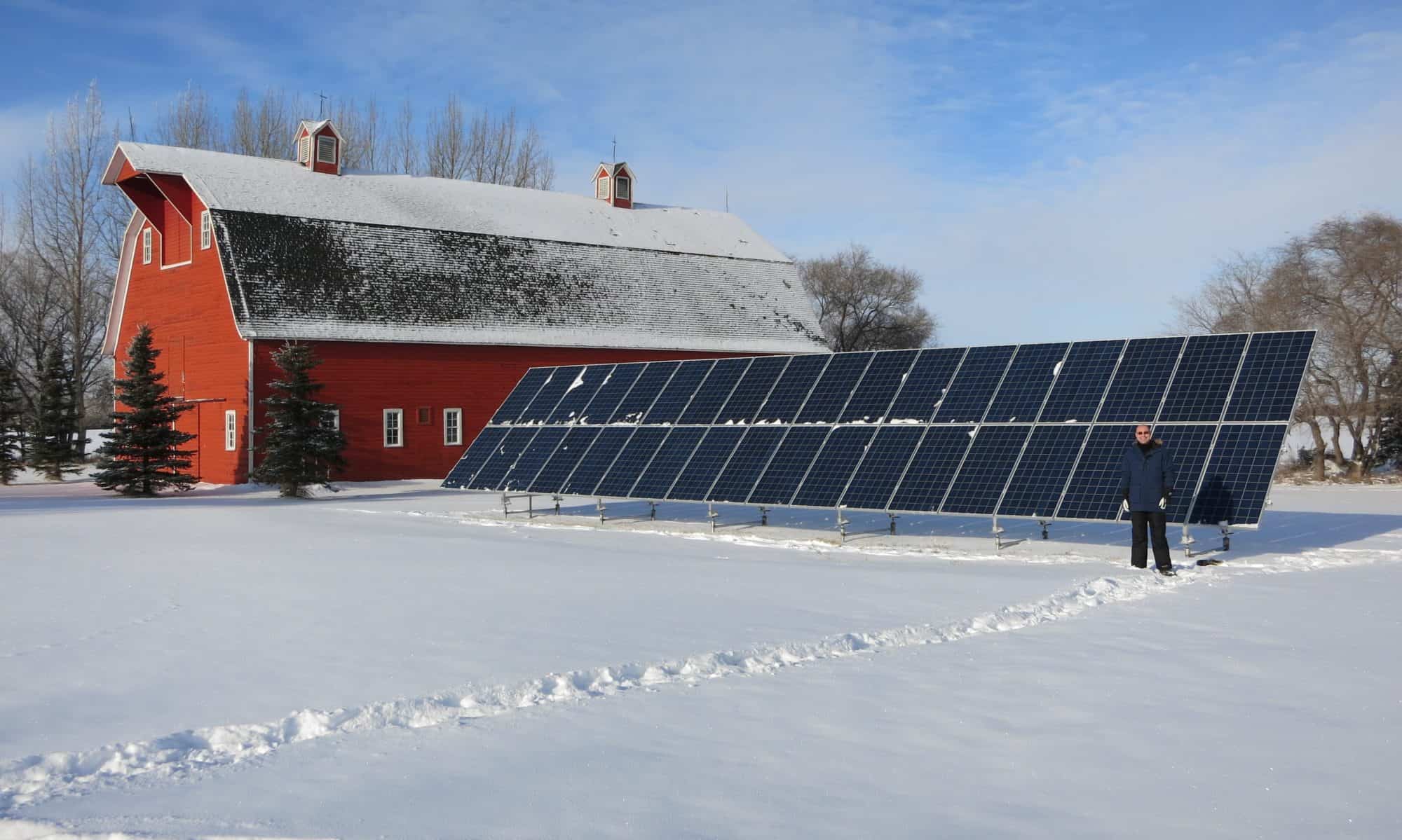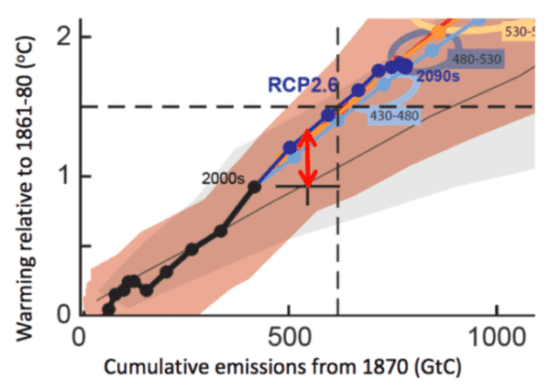A September 18th article in the journal Nature Geoscience provides some good news in the struggle to save human civilization (and perhaps half the planet’s species) from the ravages of climate change. The article by Richard Millar and nine colleagues calculates that there is still time to hold global temperature rise to 1.5 degrees Celsius above pre-industrial temperatures. (Article link is here.)
A 1.5 degree target was set in Paris in 2015. While many people assert that holding temperature increases to 1.5 degrees is impossible, Millar et al. reassess carbon budgets to show that the target is attainable. By their calculations, humans can emit an additional 700 to 900 billion tonnes of CO2 and still have a 66% chance of holding temperature increases below 1.5 degrees. That amount of CO2 is approximately equal to 20 years of emissions at current rates. (Previous assessments indicated that the carbon budget for 1.5 degrees would be used up in 5 to 7 years at current emission rates.)
The findings in the Millar paper are good news. Here’s why: they take away the argument that “it’s too late.” We still have it within our power to hold temperature increases below dangerous levels, spare low-lying island nations, prevent the inundation of rich river-delta agricultural lands in Bangladesh and elsewhere, retain the Greenland ice sheet, and prevent the worst ravages of climate change. Here’s the message everyone should hear: It’s not too late.
But while it’s not too late, it is late. The other message people should take from this article is that we have no time to spare. Aggressive action is necessary now. If we are to save ourselves from ourselves we must embark on a mobilization of near-wartime scale and speed to transform the global economy and its energy and transportation systems. We need government-led mobilization for transformation.
The article’s lead author, Richard Millar, wrote a commentary stating that “the window for achieving 1.5C is still narrowly open. If very aggressive mitigation scenarios can be implemented from today onwards, they may be sufficient to achieve the goals of the Paris Agreement.” (Find that commentary here.) At a press event he stated that holding increases to 1.5 degrees requires “starting reductions immediately and then reducing emissions to zero over 40 years.” Like nearly everyone else who has looked at this issue, Millar and his team have concluded that emissions reductions must begin immediately and emissions from the global economy must be reduced to zero by the 2050s or 2060s.
So here’s where we are: Millar et al. calculate that we have the time (if only just). We have the technologies: solar panels, wind turbines, electric trains, net-zero and passive solar homes. We have historical examples of action on a similar scale: the WWII repurposing of the major industrial economies. And we have the productive capacity: a global manufacturing sector of unprecedented scale and output. Civilian and military aircraft makers must be compelled to immediately begin building trains. Auto makers must build electric cars. The home renovation industry must be redirected away from fantasy kitchens and home spas and toward energy-efficiency retrofits. And electrical utilities must rapidly replace GHG-emitting generation plants with near-zero-emission alternatives. And we must do all these things at rates that reflect that our future depends upon our success.
The calculations by Millar et al. are sure to be controversial and closely examined. They may be revised. But the paper has weight because the team that wrote it includes many of the leading experts on carbon budgets. As climate scientist Glen Peter notes here: “the authors of this paper developed the idea of carbon budgets, are the world leading experts on carbon budgets, and derived the carbon budgets for the IPCC process.” We should all hope that Millar and his colleagues are correct in their reassessment.
The graph above is taken from a commentary by Millar and adapted from the article by Millar et al. (Link to the commentary here.)


Comments are closed.